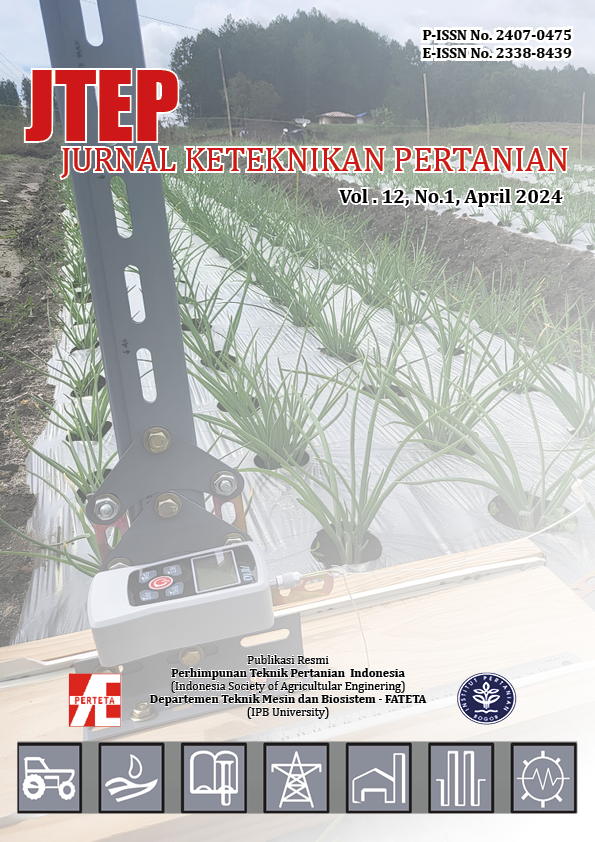Optimization of Nata de Coco Industrial Liquid Waste Processing Using Membrane-Based Ultrafine Bubble Diffuser
Abstract
The nata de coco industry produces liquid waste which, if thrown directly into water bodies (rivers) without prior processing, has the potential to pollute the surrounding environment. Laboratory test results show that the parameters BOD 1145 mg/L, COD 1737 mg/L, and TSS 206 mg/l are far above the thresholds set by the government. The aim of this research is to determine the optimum conditions for fine bubble and micro bubble treatment of nata de coco liquid waste in reducing the characteristic values of nata de coco liquid waste. This research was carried out using experimental methods with test samples of 40 liters and 60 liters. Data collected through direct observation include DO, TDS, pH, temperature which are measured every 2 hours, while data collected through laboratory testing of BOD, COD and TSS which are tested every 12 hours and 24 hours. The data was then processed using the Taguchi method with the aim of optimizing the fine bubble treatment for changes in the characteristics of nata de coco liquid waste. The research results showed that the optimum conditions were found in the fine bubble treatment with an aeration period of 24 hours and a volume of 40 liters. The best percentage reduction in BOD was found to be 94% or 68 mg/L. COD reduction obtained the best percentage reduction of 93% and/or became 121 mg/L and TSS obtained the best percentage reduction of 69% or became 77 mg/L. These results are in accordance with the Regulation of the Minister of Environment of the Republic of Indonesia Number 5 of 2014 concerning Waste Water Quality Standards
Authors

This work is licensed under a Creative Commons Attribution-ShareAlike 4.0 International License.
Authors submitting manuscripts should understand and agree that copyright of manuscripts of the article shall be assigned/transferred to Jurnal Keteknikan Pertanian. This work is licensed under a Creative Commons Attribution-ShareAlike 4.0 International License (CC BY-SA) where Authors and Readers can copy and redistribute the material in any medium or format, as well as remix, transform, and build upon the material for any purpose, but they must give appropriate credit (cite to the article or content), provide a link to the license, and indicate if changes were made. If you remix, transform, or build upon the material, you must distribute your contributions under the same license as the original.

